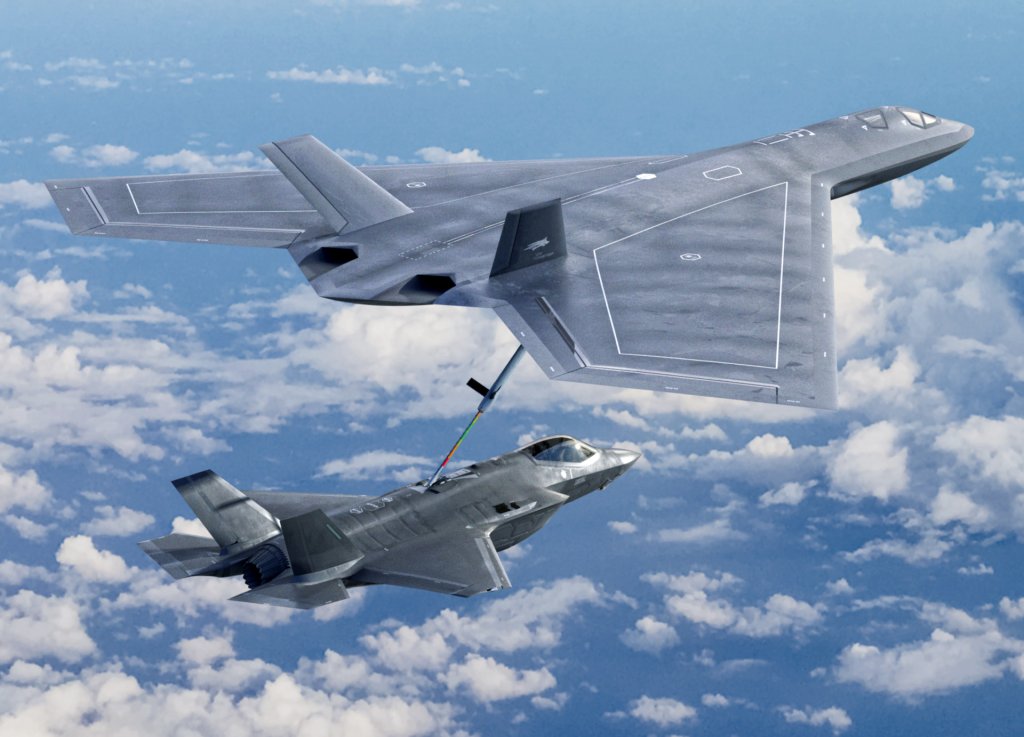SOURCE: AFI


In a striking move to address the U.S. Air Force’s evolving aerial refueling needs, Lockheed Martin’s Skunk Works advanced projects division has introduced a new concept for a pilot-optional, stealth-enabled tanker aircraft. As the Air Force develops its requirements for a future Next Generation Air-Refueling System (NGAS), Skunk Works’ proposal brings a forward-thinking vision to the table, suggesting a low-observable, flexible tanker with advanced capabilities to meet the demands of tomorrow’s battlespace.
The U.S. Air Force envisions NGAS as a ‘system of systems,’ a comprehensive suite of platforms and capabilities that would revolutionize aerial refueling while seamlessly integrating with future combat aircraft. Lockheed’s Skunk Works has taken this opportunity to showcase an innovative design that addresses some of the most pressing challenges, particularly in the realm of survivability, adaptability, and operational cost.
Revealed at the Airlift/Tanker Association’s (ATA) recent annual symposium, the tanker concept reflects a range of advanced features aimed at enhancing survivability and operational flexibility. These features address the Air Force’s concerns about sustaining a new refueling fleet amid other modernization priorities, such as the B-21 bomber and F-35 Lightning II programs, while staying within budget constraints.
Design Features: Low-Observable and Multi-Role Refueling Capability
Lockheed’s rendering shows an aircraft with several stealth-oriented design elements:
Shrouded Platypus-Style Exhaust with Serrated Edges: This unique exhaust design, positioned at the rear of the aircraft, further reduces the aircraft’s thermal and radar signature, enhancing its survivability in hostile airspace.
Swept Main Wings and Horizontal Stabilizers: These provide aerodynamic efficiency, stability, and allow for stealth shaping.
Canted Vertical Stabilizers: Positioned at the aircraft’s outboard, these help reduce radar cross-section (RCS), aligning with the U.S. Air Force’s desire for low observability.
Chine Line: Wrapping around the forward fuselage, the chine line is a stealth feature that contributes to the aircraft’s overall RCS reduction, especially against radar detection from ground-based and airborne threats.
Saw-Tooth Panel Lines and Wingtip Pods: These structural details, including low-observable shaping on wingtip pods, enhance the tanker’s ability to operate undetected in contested environments.
Skunk Works’ tanker concept is equipped with a pair of refueling booms extending from sponsons at the wings’ ends. This boom configuration aligns with the U.S. Air Force’s preferred method of aerial refueling but also allows for potential adaptability to the probe-and-drogue refueling method used by the U.S. Navy, Marine Corps, and various international allies.
If implemented, this dual-mode refueling flexibility would make the new tanker compatible with a wide range of aircraft, from fast jets and tiltrotors to helicopters. In addition, a centerline probe-and-drogue setup—like those on the KC-46 and Airbus A330 MRTT—could be incorporated, enhancing the tanker’s versatility.
One of the standout aspects of the Skunk Works design is its pilot-optional capability. In autonomous mode, this tanker could perform high-risk refueling operations in contested airspace without risking pilot safety. This feature also makes it a compelling option for scenarios where human presence may be limited or impractical. As autonomy in aviation advances, Lockheed’s design positions the Air Force to lead in pilotless tanker missions, which could reduce personnel costs and allow for continuous operations in complex mission profiles.
Skunk Works’ NGAS concept aligns with the Air Force’s need for a more survivable refueling asset that can support stealth aircraft like the B-21 Raider and the F-35. However, the program’s affordability is a significant challenge, as funding constraints already impact various modernization projects. With advanced systems, cutting-edge stealth features, and pilot-optional functionality, this tanker’s development and production costs could be substantial, requiring careful budget alignment to ensure feasibility.